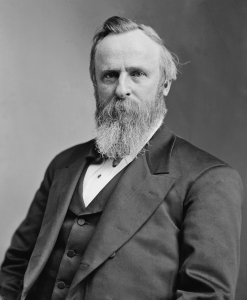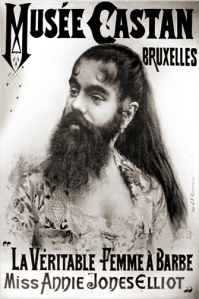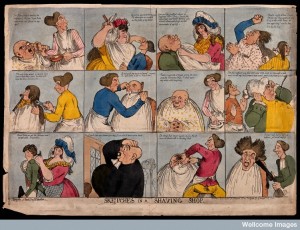It’s November, and that time of year when men all over the world will be donning moustaches to raise money for, and awareness of, prostate cancer, through Movember. Get ready for a raft of valiant efforts, with some maybe even graduating to the moustache wax and twirly ends! Moustache newbies can take advantage of the huge range of products now available to shape, style and otherwise pamper their facial hair.
Not, however, that there’s been much of an extra incentive needed in recent times for men to rediscover the love for their facial hair. As I’ve repeatedly suggested here on the blog, and elsewhere, there is little sign that beards are diminishing in popularity; if anything they seem to be going from strength to strength, with new styles emerging over recent months to replace the ‘Hipster’/Lumberjack beard of 2 or 3 years ago.
Events like ‘Movember’, though, remind us of the prosthetic nature of facial hair – beards and moustaches are easy to adopt…you just have to stop shaving and there they are. And, just as easily as they can be put on, they can be shaved off in a few minutes. Wearing them (or not) can dramatically alter facial features and, as the continuing studies into the supposed attractiveness of beards keep suggesting, this can affect how individual men are viewed by others. This is in fact something that I’ve been exploring in my research recently. One thing that I find particularly interesting is the use of false facial hair by men.
At various points in history, being unable to grow a beard has certainly been severely stigmatised. In Tudor and Stuart Britain, beardlessness was a state connected with either immaturity or effeminacy. A man whose beard was thin and scanty might be insulted with terms such as ‘smock face’, or regarded as a mere ‘beardless boy’. In the eighteenth century, although most men were clean-shaven, the ability to grow a beard was still a vital element of masculinity. Even if you didn’t grow it, you had to at least be able to show that you could! In Victorian Britain, at the height of the beard movement, beardless men were again subject to suspicion.
What, though, could men whose facial hair was somewhat lacking do to avoid the barbs? At least in the nineteenth century some help was available. One easy method was to visit one of the many theatrical suppliers in large towns and cities, from whom a fairly realistic false moustache could be bought.

Theatrical retailers like C.H. Fox in 1893, sold a range of styles to suit every taste. These included ‘Beards and Moustaches on wire, ordinary’, ‘beards best knotted on gauze’, ‘sailors beards’ and ‘moustaches on hair net foundation, the very best made, perfectly natural, suitable for Detective Business’, costing the princely sum of two shillings and sixpence.
(image from ‘The Mysteries of Paris’ by Charles Dillon, available on Google Books)
A number of enterprising artisans began to manufacture false beards, moustaches and whiskers to cater specifically for those whose facial hair steadfastly refused to make an appearance. In 1865 Henry Rushton lodged an application for…
THE APPLICATION OF A CERTAIN KIND OF GOAT’S HAIR IN IMITATION OF HUMAN HAIR TO THE MANUFACTURE OF HEAD DRESSES, MOUSTACHES, AND ALL KINDS OF FALSE HAIR, AND THE PROCESSES OF PREPARING THE SAME
Rushton proposed a set of chemical processes to prepare mohair for various uses which “I apply in imitation of human hair for covering the foundations and forming plain ‘back’ or ‘Brighton Bows’ or any other plain hair head dresses, and apply the same also in manufacture of various kinds of false hair, such as ringlets, coronets, head dresses, whiskers, moustaches, and the like. Another patent from Thomas Bowman in 1800 even proposed a contrivance with a set of mechanical springs and elastic components, to enable wigs and false whiskers to stick closely to the head and face.
So important were moustaches and whiskers to the military that they supplied their own false articles, often made of goat’s hair, to fresh-faced, stubble-free recruits, to ensure that the whole regiment was suitably hirsute, and ready to face the enemy.
But another, often forgotten, group also found the portability and ease of false facial hair vital in their professional lives….criminals! The face-altering properties of facial hair were particularly useful to criminals. In the days before DNA testing, CCTV and fingerprinting, a fleeting glimpse of a criminal’s face was often all a victim had to go on. A thick beard, dramatic whiskers or a droopy moustache were all notable features by which a criminal could be identified and brought to justice. But what happened if they weren’t real?
It’s clear from records and reports that many criminals recognised the value of facial hair in hiding their true faces. In 1857 James Saward and James Anderson appeared at the Old Bailey accused of forgery. Part of their disguise was the adoption of a wig and ‘false whiskers’ to ensure that they avoided detection. Part of the defence of Thomas Cuthbert, accused of theft in 1867, was that the false whiskers and moustache he was wearing when arrested were not put on by him, but were applied by another man, when Cuthbert was dead drunk! Many other cases record the discovery of false whiskers, beards or moustaches amongst the possessions of criminals, or their use in trying to defy identification. ‘It can’t have been him your honour, the man who attacked me had a huge beard!’
Perhaps the most sinister case is that of the physician Thomas Neill, indicted for murder in 1892, and known by the alias of Dr Cream. Various witness attested to having known the doctor, some testifying that he sometimes wore a moustache, others that he had dark whiskers, and another that he was clean-shaven. One witness, however, a Canadian traveller named John Mcculloch, noted meeting Neill in his hotel, after he called for a physician when feeling unwell. After supplying Mcculloch with antibilious pills, the two men began to chat about their respective businesses. The doctor showed the man his medical box and pointed to a bottle of poison. “For God’s sake, what do you do with that?” asked the shocked traveller, to which Dr Cream replied “I give that to the women to get them out of the family way”.
By now shocked and suspicious the traveller continued to question the doctor: “he stepped backwards to the trunk and produced a pair of false whiskers, or divided beard without mustaches—I said, “What do you use these for?”—he said, “To prevent identification when operating”—he led me to believe previous to that that he procured abortion”. None of this helped the evil Dr Cream; he was found guilty and sentenced to hang, his false whiskers proving no escape from the law.
So as Movember gets underway it will be interesting to see how many men put on their moustaches and, equally, how many remove them again at the end of the month! Some don’t get on with them, but others are pestered by their partners to lose the fuzz; a common complaint is that it makes a man look older, or otherwise alters their appearance too much. Another recurring themes amongst opponents of beards is that they make men look as though they have something to hide. This is one of the reasons that politicians don’t usually grow them. As the examples shown here suggest though, many bearded men actually did have something to hide.


















